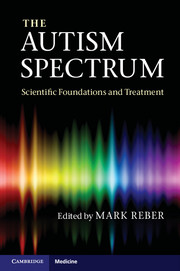Book contents
- Frontmatter
- Contents
- List of Abbreviations
- List of Contributors
- Preface
- Section 1 What We Know about Autism and How We Know It
- Chapter 1 Autism nosology
- Chapter 2 Epidemiology of autism
- Chapter 3 Developmental neuropsychology of autism
- Chapter 4 Neuropathology of autism
- Chapter 5 Etiology
- Chapter 6 Etiology
- Section 2 Assessing and Treating Children with Autism Spectrum Disorders
- Section 3 Assessing and Treating Adults with Autism Spectrum Disorders
- Index
- Plate Section
- References
Chapter 1 - Autism nosology
historical perspectives
from Section 1 - What We Know about Autism and How We Know It
Published online by Cambridge University Press: 05 November 2012
- Frontmatter
- Contents
- List of Abbreviations
- List of Contributors
- Preface
- Section 1 What We Know about Autism and How We Know It
- Chapter 1 Autism nosology
- Chapter 2 Epidemiology of autism
- Chapter 3 Developmental neuropsychology of autism
- Chapter 4 Neuropathology of autism
- Chapter 5 Etiology
- Chapter 6 Etiology
- Section 2 Assessing and Treating Children with Autism Spectrum Disorders
- Section 3 Assessing and Treating Adults with Autism Spectrum Disorders
- Index
- Plate Section
- References
Summary
In January 2009, the White House posted an action agenda on its website. In it, the new Obama administration made a commitment to “supporting Americans with Autism Spectrum Disorders,” by increasing funding for research, treatment, screening, public awareness, and support services. Particular mention was made of advancing research on the treatment and causes of autism; improving lifelong services; enhancing federal and state programs; and implementing universal screening.
This statement was noteworthy, not only for its recognition of autism as a significant public health concern, deserving increased federal funding for research and treatment, but also for the use of the term autism spectrum disorders. By choosing this phrase to characterize the condition commonly known as autism, the White House was recognizing that autism is not a single disorder, but many.
A central theme of this book is that autism is a clinically and etiologically heterogeneous condition. Although people diagnosed with autism share certain characteristics – a triad of unique and severe deficits in social interaction, difficulties in verbal and nonverbal communication, and a restricted repertoire of interests and behaviors – they vary remarkably in the nature of these deficits, in accompanying symptoms, in intellectual functioning, and in underlying cause.
Given this heterogeneity, it is essential that there be some consensus on how to define and classify the disorders that we now refer to as autistic. Such a consensus is needed for research, so that investigators can agree upon the phenomena they are studying; for clinical care, so that patients can be diagnosed with consistency and treatments tailored for recognized diagnoses; and for the legal system, for provision of government and educational services, and for health insurance (Volkmar and Klin, 2005). Beginning with the initial description of autistic disorder in 1943 by Leo Kanner, there has been a lengthy process of refining and validating this particular diagnosis and those of the related conditions we now group as autistic spectrum disorders (Wing, 2005).
- Type
- Chapter
- Information
- The Autism SpectrumScientific Foundations and Treatment, pp. 1 - 33Publisher: Cambridge University PressPrint publication year: 2012



